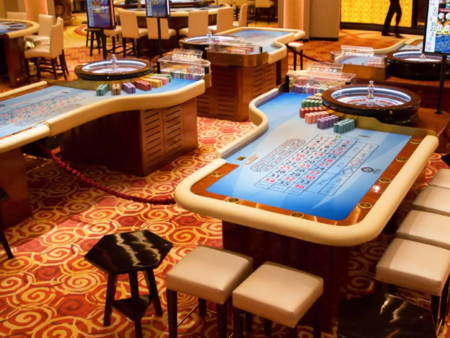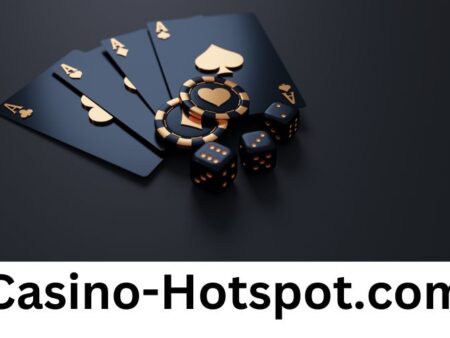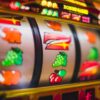Mathematical concepts like probability and odds of winning are essential for understanding casino games. Players should learn the house advantage (“edge”) before choosing to gamble their money.
Professional bettors know that losing is part of the game. So they practice financial management techniques to help protect their bankrolls in the long term.
For example, a particular outcome in blackjack may have a better than 50% chance of occurring. The probability of players winning a hand also rests on their ability to recognize when the odds are in their favor.
Here’s a look at the science behind probability in casino games.
How to Calculate Probability
Probability in gambling comes from math equations. The number of favorable outcomes divided by the number of possibilities equals probability.
Say you roll a six-sided die, and you want a six. There are six sides to the dice. So you’ve got a one-in-six chance of getting your desired number.
One divided by six roughly equals 0.1666. That means the probability of rolling a single number on a six-sided dice is about 16.66%.
The odds of you not rolling your desired number are much more significant. For example, five divided by six equals around 0.8333. That’s an 84% chance of you getting a one, two, three, four, or five.
Applying probability to a game like single-deck blackjack with 52 cards helps to determine your odds of winning or losing. When you get your two cards, you can estimate your chances against the dealer’s hand.
How Probability Works in Gambling
Casinos operate as a business. They’re well-accustomed to percentages and how they work. House edge becomes a probability regarding casino games.
The adage that “the house always wins” rings true.
Understanding the most basic probability of house edge helps to determine where and when to wager your bankroll.
The easiest way to recognize probability in gambling comes from roulette. The American version has a 0 and 00 for 38 pockets on the wheel (0, 00, 1 – 36).
In European roulette, there’s only one pocket for zero. That means when betting on a single number, the probability of winning is one out of 37. American roulette probability stands at one out of 38. The higher odds offer a house edge of 5.26%.
European roulette comes with a 2.7% house edge. For that reason, the game is rare at land-based casinos.
Online players may find European roulette versions at various real money casino gaming options.
Using Probability as a Leverage for Blackjack
Blackjack requires a basic understanding of probability to help leverage a player’s chances. With a simple strategy, the house edge of blackjack might be as low as 0.5%. Due to mistakes, the house edge may rise to about 2%.
Players in blackjack choose to “hit” or “stand” with their cards. The objective of the game is getting closest to 21 with your total without going over. If a player receives an Ace and a ten-card (10, Jack, Queen, or a King), that’s blackjack with a typical payout of 3 to 2.
Beating the dealer requires some knowledge of when to hit or stand. Also, you may choose to double down or split your hand.
Doubling down means you double your bet and then receive one more card. Splitting your hand creates two separate hands from your two cards with an extra wager.
You’ll want to double down on a hard 11. (Hard in blackjack means no Aces. A soft hand means having an Ace, which equals one or 11.)
With 11, no cards can bust or end your hand. A total of 16 ten-cards in single-deck blackjack means you’d have a decent probability of getting one.
You’d subtract your and the dealer’s cards from the deck (52 – 4 = 48). Sixteen divided by 48 leaves you with about a 33% chance of getting a ten-card.
There are many blackjack strategies to consider. Another basic one is to stick with your hand 12 or above if the dealer’s showing a 2 through 6.
You can practice using a formula to learn the probability of getting a desired card. Then you can make an informed decision based on that percentage.
Using Probability for Roulette and Other Casino Games
The roulette wheel offers different types of bets with varying payouts. The payouts generally come based on the odds of winning that particular bet.
For example, the odds of hitting even or odd numbers are about 50/50. There are 18 odd numbers and an equal number of even ones. With two zero slots, that’s roughly 47%. The same goes for red or black numbers.
Casinos payout 1:1 for even, odd, red, and black wagers. Rows and columns payout 2:1 since they offer a probability of about 31.5% – 32.4%.
Roulette strategies based on probabilities help players understand the game better. That’s also true for other casino games like craps, video poker, and slots.
Random number generators built into slot machines offer return-to-player percentages. Even the highest RTP slots are programmed to ensure the house always wins in the long run.
Using a Betting Odds Calculator
A betting odds calculator may be helpful to get a better sense of probability in casino games. There are American odds, decimal, fractional, and implied (probability).
Sports bettors read odds associated with games and place their wagers concerning probability. Any negative odds show a likely occurrence, while positive odds represent an underdog bet.
Try out some fractions based on casino games like blackjack and roulette. It may be a valuable resource, especially for online players.
The Importance of Understanding Probability for Casino Games
The difference between winning and losing is understanding probability when playing casino games. A person who sits down at a roulette table and places their bets without a strategy could get lucky in the short term.
However, a player who understands probability may fare better by winning more consistently.
Casino games get designed for the house to win over long periods. Software companies test their slots with millions of spins. They want to provide players with just enough winning opportunities that they keep coming back.
Understanding probability is essential to improving your chances of winning more than you lose.






